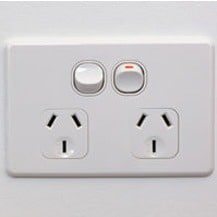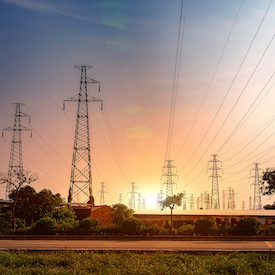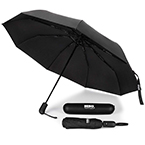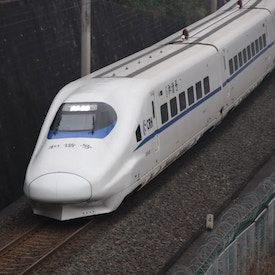China is an incredibly vast and diverse country and one that can feel more than a little intimidating to new travelers. But those who do go, and especially those who venture beyond the few popular cities, will be rewarded with unique experiences and a look at a culture completely different from their own. More so than with most other countries, though, it’s important to make sure you’re prepared for a trip to China. Leave plenty of time to get your visa, research how to get from the airport to your hotel, and make sure to bring everything you’ll need. When you’re packing, don’t forget a US to China power adapter, so you can keep your phone and other electronic necessities charged during your trip.
US to China Power Adapter: What Plug Do I Need? (2025)
Which power outlets do they use in China?

Chinese power outlet
Three different types of electrical outlets are found in China. There are Type A sockets, which have two flat holes and are used in the U.S., and Type C sockets, which have two round holes and are common in Europe.
The third outlet type which is also the most common in China is type I, which is the only one that’s grounded. It has three flat holes, with the top two positioned at a diagonal.
Unlike the US, China uses a frequency of 50 Hz and a voltage of 220V. While the majority of other countries operate at 230V, anything between 220V and 240V is fully compatible.
All of this information refers to mainland China, but note that electricity is different in the country’s two Special Administrative Regions and in Taiwan. Hong Kong uses Type G outlets, the British outlet type with three rectangular holes. Some Type D sockets, normally used in India, are found in Hong Kong as well. In Macau, you might encounter any of four different kinds: Type D, Type G, Type M (a larger version of Type D, which is mainly used in South Africa), and Type F (which has two round holes and two grounding clips and is found throughout Europe). In Taiwan, you’ll find Type A and Type B sockets, the two types used in the U.S. Hong Kong, Macau, and Taiwan all use the same 50 Hz frequency as mainland China. However, while Hong Kong and Macau also have the same voltage of 220V, Taiwan uses 110V.
What kind of power adapter do I need for China?

One of the many questions you’ll have as a first-time traveler to China is, “What plug do I need for China?” Electricity there is complicated since three different outlet types are used, and none of them are interchangeable.
Whether you’re visiting Beijing, Shanghai, or the countryside, you could encounter any or all three. That means you’ll want to make sure you have a Universal Adapter that works with each one. This reliable universal adapter is a great choice that will have you covered throughout China and 100+ other countries around the world.
What’s the electricity and power supply like in China?

Electrical infrastructure in China has developed quickly in the past decade. According to official figures, 100% of the population now has access to electricity, even in the most rural villages. However, power outages do occur in China occasionally, especially in the summer. As temperatures climb, people use more and more power, and it can put too much strain on the electrical grid. This is especially problematic in the most industrialized areas, where demand for electricity is the highest. Fortunately, the resulting blackouts, once commonplace in the summer, happen much less frequently than they used to.
Do I Need A Voltage Converter for China?
Most modern devices can operate on both the 120V voltage found in the U.S. and the 220V found in China, which means they don’t require a voltage converter. But there are some exceptions; certain American-made appliances are only rated to around 120V, which means they can’t be used on electrical grids with higher voltages. Typically, these appliances include hairdryers and curling irons. Plugging one of these into the wall when they’re not compatible could shock you or start a fire, and it will almost certainly destroy the device.
Upscale hotels in major Chinese cities sometimes have a special outlet in the bathroom that uses a voltage of 110V, but it’s not something you should count on. If you’re bringing any appliances rated below 220V, make sure you bring a US to China voltage converter to use with them. Alternatively, you could order a new set of appliances that are either rated to 220V or that allow you to change the voltage manually.
Other China Packing List Items
In addition to your US to China power adapter, these items will help you pack with intention and expand the possibilities of your getaway. Also, check out our China packing list for more inspiration and ideas.
-
1. Neck Wallet / Passport Pouch
-
2. Packing Cubes
-
3. Virtual Private Network (VPN)
China is the place most of us associate with VPNs, and with good reason. Internet censorship is heavier there than anywhere else in the world; most social media platforms are blocked, as are many Western news outlets and even Google. To access the Internet as you know it, you’ll need a VPN to bypass all the censorship. A VPN will also protect your privacy, so it’s smart to use one regardless. It probably won’t surprise you that VPNs are a sensitive issue in China, but regulations around them mainly target local people and Chinese companies, not foreign visitors. NordVPN has great customer service if you have any trouble setting up your VPN to get around China’s restrictions.
![how a vpn works]()
-
4. Lipstick-Sized Charger
-
5. Windproof Travel Umbrella
-
6. Jet lag Relief Pills
The entirety of China is in one time zone, which is 12 hours ahead of the East Coast of the U.S. A time difference that big practically guarantees jet lag, which will make the beginning of your trip a struggle. Bring some jet lag relief pills to help you get used to Chinese time, or you’ll find yourself awake at 3 in the morning and napping all afternoon.
![Jet Lag Relief]()
-
7. Travel Insurance for China
If you have U.S. health insurance, it most likely won’t cover medical treatment abroad. That means that if you get sick or injured during your trip and need to see a doctor in China, you’ll have to pay the expenses out of pocket. To save yourself a potentially huge sum of money, sign up for a travel insurance plan.
A good travel insurance plan (we like to use Faye) will cover not only medical emergencies but also common travel occurrences like flight cancellations and lost or stolen items. Faye also offers convenient add-ons like “cancel for any reason” and vacation rental coverage. The best part is how easy they make it to get covered and reimbursed. It’s all done from their app on your phone without having to deal with confusing paperwork.
![Faye Travel Insurance]()
Other FAQs about traveling in China
-
1. When to Travel to China?
Autumn is generally the best time to visit China; it’s cooler and less crowded than summer and not as rainy as spring. If you can’t go in the fall, springtime is the second best time, and northern China doesn’t get too much rain anyway. You’ll want to avoid visiting during public holidays if possible, especially Chinese New Year and the Golden Weeks. Popular landmarks overflow with Chinese tourists, and everything sells out far in advance. Be sure to check current China travel advisories before you go.
-
2. What is the weather like in China?
In a country as massive and diverse as China, it’s impossible to generalize about the weather. However, winters are typically mild in the south and freezing elsewhere, while summers are hot everywhere except in the mountains. The harshest winters are found in the far northeast and in the desert that extends along the country’s border with Mongolia. Summers are generally hottest in the central- and south-western part of the country, although temperatures frequently climb above 90 even in Beijing.
-
3. What to do in Beijing?
As one of the world’s biggest and oldest cities, Beijing has no shortage of things to do. Visits to the Great Wall and Tiananmen Square should top any itinerary. Other top attractions include the National Museum, the Temple of Heaven, the Summer Palace, and the Forbidden City. For market enthusiasts, there’s also the Silk Market and Wangfujing Night Market. Some of the best areas to wander include the neighborhoods of Gulou and Shunyi, as well as the 798 Art District.
-
4. What to do in China?
From the mountains of Tibet to the beaches of Hainan, China has more to offer travelers than you could see in a lifetime. To begin, there are several world-famous attractions, including the Great Wall and the Terracotta Warriors, as well as the Potala Palace in Tibet. The natural wonders in China are just as stunning, and you can’t go wrong cruising the Li River, visiting the Three Gorges, or exploring Zhangjiajie National Forest Park. If you’re more of an urbanite, you’ll never run out of metropolises to visit in China either: take your pick of Beijing, Shanghai, Xi’an, Chengdu, Guangzhou, and Hangzhou, for example.
-
5. How to get around in China?
Because China is so enormous, flying domestically may be the only feasible option, depending on where you’re going. The country has nearly 200 airports and almost a dozen major airlines, so the flight options are plentiful. China also has one of the world’s most extensive rail networks, with ultra-modern high-speed trains running on some routes. The trains are efficient and, except for the cheapest classes, very comfortable.
Lastly, China’s long-distance buses are another option if you’re on a budget and have time to spare. If you’re visiting a remote area or buying a ticket at the last minute, the bus may be your only choice.
Most Chinese cities have extensive public bus systems, and metros have recently been built in the bigger cities. In most places, you can also easily hail a cab or have your hotel call one for you. Didi, a ride-sharing app that beat out Uber in China, is available in some of the major cities, too. Most drivers don’t speak much English, so it’s useful to have your destination written out in Chinese so you can show them.











 Autumn is generally the best time to visit China; it’s cooler and less crowded than summer and not as rainy as spring. If you can’t go in the fall, springtime is the second best time, and northern China doesn’t get too much rain anyway. You’ll want to avoid visiting during public holidays if possible, especially Chinese New Year and the Golden Weeks. Popular landmarks overflow with Chinese tourists, and everything sells out far in advance. Be sure to check current
Autumn is generally the best time to visit China; it’s cooler and less crowded than summer and not as rainy as spring. If you can’t go in the fall, springtime is the second best time, and northern China doesn’t get too much rain anyway. You’ll want to avoid visiting during public holidays if possible, especially Chinese New Year and the Golden Weeks. Popular landmarks overflow with Chinese tourists, and everything sells out far in advance. Be sure to check current  As one of the world’s biggest and oldest cities, Beijing has no shortage of things to do. Visits to the Great Wall and Tiananmen Square should top any itinerary. Other top attractions include the National Museum, the Temple of Heaven, the Summer Palace, and the Forbidden City. For market enthusiasts, there’s also the Silk Market and Wangfujing Night Market. Some of the best areas to wander include the neighborhoods of Gulou and Shunyi, as well as the 798 Art District.
As one of the world’s biggest and oldest cities, Beijing has no shortage of things to do. Visits to the Great Wall and Tiananmen Square should top any itinerary. Other top attractions include the National Museum, the Temple of Heaven, the Summer Palace, and the Forbidden City. For market enthusiasts, there’s also the Silk Market and Wangfujing Night Market. Some of the best areas to wander include the neighborhoods of Gulou and Shunyi, as well as the 798 Art District. Because China is so enormous, flying domestically may be the only feasible option, depending on where you’re going. The country has nearly 200 airports and almost a dozen major airlines, so the flight options are plentiful. China also has one of the world’s most extensive rail networks, with ultra-modern high-speed trains running on some routes. The trains are efficient and, except for the cheapest classes, very comfortable.
Because China is so enormous, flying domestically may be the only feasible option, depending on where you’re going. The country has nearly 200 airports and almost a dozen major airlines, so the flight options are plentiful. China also has one of the world’s most extensive rail networks, with ultra-modern high-speed trains running on some routes. The trains are efficient and, except for the cheapest classes, very comfortable.